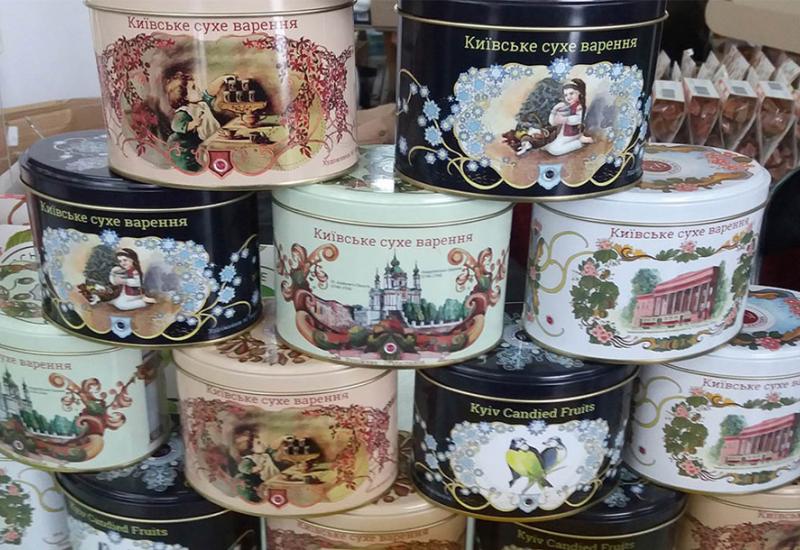New Year Holidays are ongoing and different goodies on our tables don’t end. A novelty for Kyiv’s citizens was the appearance at the end of the year of a ‘tasty’ souvenir - artistically decorated metal cans and fancy packages with dry Kyiv jam (candied fruits). There are four different types of cans’ decorations: an architectural pearl - St. Andrew's Church, a red university (the alma mater of the founders of the company) and pictures of antiquity - a girl under a tree and a boy stretching to the boxes with sweets. They promise to image the Kyiv Polytechnics.
This name was known probably in all the Russian Empire and Europe100-150 years ago. Candied fruits were the products of confectionery. Various tasty figures were made of them. Wealthy people bought such sweets as gifts, and sometimes even as presents for declaration of love.
Storytellings
In the Museum of the History of Kyiv there are versions that the Swiss confectioner Balju of the respect of Katherine II, who "had the misfortune to break his leg in Podol" in 1797 during the Empress’s visiting Kyiv, taught the citizens of Kyiv how to cook candied fruits. The entourage went further to the south and Balju was left to be treated. Having nothing to do he began cooking candied fruits, since there were a lot of fruit gardens. Such a version was described by the historian Mykola Zakrevsky in his "Description of Kyiv" in 1868.
The first written record of the Kyiv candied fruits are dated by the historians to the fourteenth century. The sweets were brought from Kyiv in 1386 and were served at the wedding ceremonies of the Lithuanian Prince Yagailo. The Empress Elizaveta Petrivna staying in Kiev highly appreciated the taste of dry jam and wished it to be taken to St. Petersburg in 1744. Katherina II did the same thing. Having tried candied fruits, she ordered on the 14th of April 1777 to make in Kyiv and to bring to St. Petersburg half a pound of candied dry peaches, apricots, nectarines, plums, two pounds of prunes, peaches, apricots, plums, pound of walnuts, rosehips, dogberries.15 pounds of ordered dessert were delivered to the royal court in October.
The Balabukhs are the most famous producers of dry jam in Kyiv. The branded confectionery product reached European fame and was honored with a number of prestigious awards under their rule.
The treat is coming back
In spring 2016 at one of the fairs a product appeared in bright packaging. ‘Kyiv dry jam" was written on it. The family of Kyiv revived the technology of making candied fruits from the book ‘Gift to young mistresses’ by Olena Molokhovets in 1861. Behind this simple and exquisite dessert lie fruits, vegetables and berries, or which Ukrainian land is rich. Among them apples, pears, beets, carrots, rhubarbs, cherries and peels of lemons, oranges and grapefruits. Their specificity is to keep the taste maximally similar to the one of fresh product. A lot of raw materials are purchased: a kilo of candied fruits requires 4-6 kilos of fruits (vegetables) and up to 10 kg of cherries and strawberries.
Why do we love and appreciate candied fruits so much? Because they are tasty. Because they contain natural fructose, fiber, a mass of plant proteins and carbohydrates. Besides, they don’t contain fats. Candied fruits of peels of oranges, lemons, tangerines or grapefruits, due to the high content of pectin in them, help to normalize the functioning of the digestive system, to reduce the level of bad cholesterol and sugar in body.
As the experts advise, mix the tastes, experiment. Try candied fruits with cheese, meat dishes or in salads. The impressions will be interesting, bright and unexpected.

